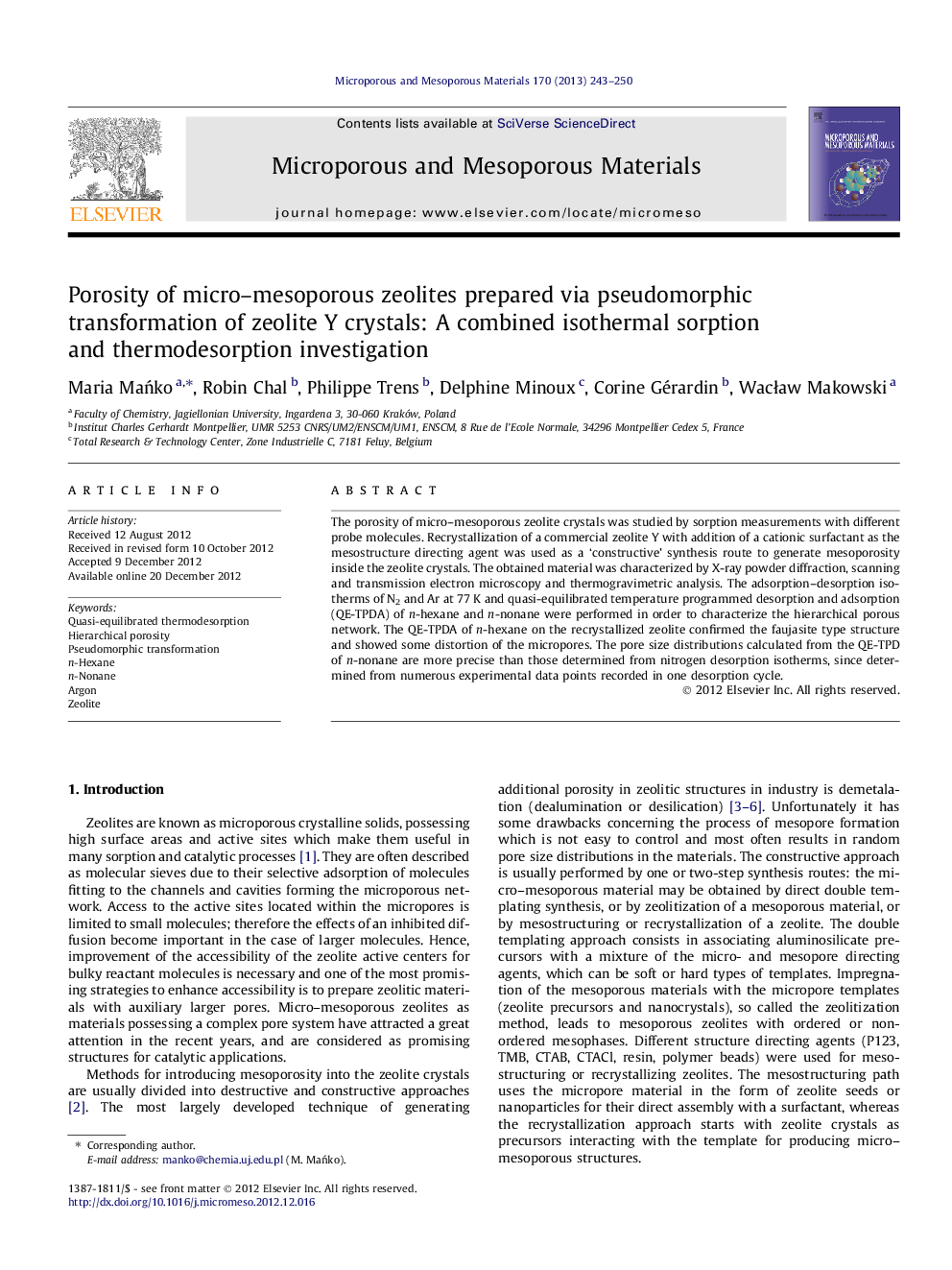| Article ID | Journal | Published Year | Pages | File Type |
|---|---|---|---|---|
| 73577 | Microporous and Mesoporous Materials | 2013 | 8 Pages |
The porosity of micro–mesoporous zeolite crystals was studied by sorption measurements with different probe molecules. Recrystallization of a commercial zeolite Y with addition of a cationic surfactant as the mesostructure directing agent was used as a ‘constructive’ synthesis route to generate mesoporosity inside the zeolite crystals. The obtained material was characterized by X-ray powder diffraction, scanning and transmission electron microscopy and thermogravimetric analysis. The adsorption–desorption isotherms of N2 and Ar at 77 K and quasi-equilibrated temperature programmed desorption and adsorption (QE-TPDA) of n-hexane and n-nonane were performed in order to characterize the hierarchical porous network. The QE-TPDA of n-hexane on the recrystallized zeolite confirmed the faujasite type structure and showed some distortion of the micropores. The pore size distributions calculated from the QE-TPD of n-nonane are more precise than those determined from nitrogen desorption isotherms, since determined from numerous experimental data points recorded in one desorption cycle.
Graphical abstractFigure optionsDownload full-size imageDownload as PowerPoint slideHighlights► Micro–mesoporous structure obtained by pseudomorphic transformation of zeolite HY crystals was performed. ► Microporosity was confirmed by Ar and N2 adsorption isotherms. ► FAU type structure was identified by the QE-TPDA of n-hexane. ► Distortion of the micropores upon recrystallization was found by the QE-TPDA of n-nonane. ► QE-TPDA of n-nonane allowed to obtain in shorter time more precise PSDs than classical N2 adsorption.
